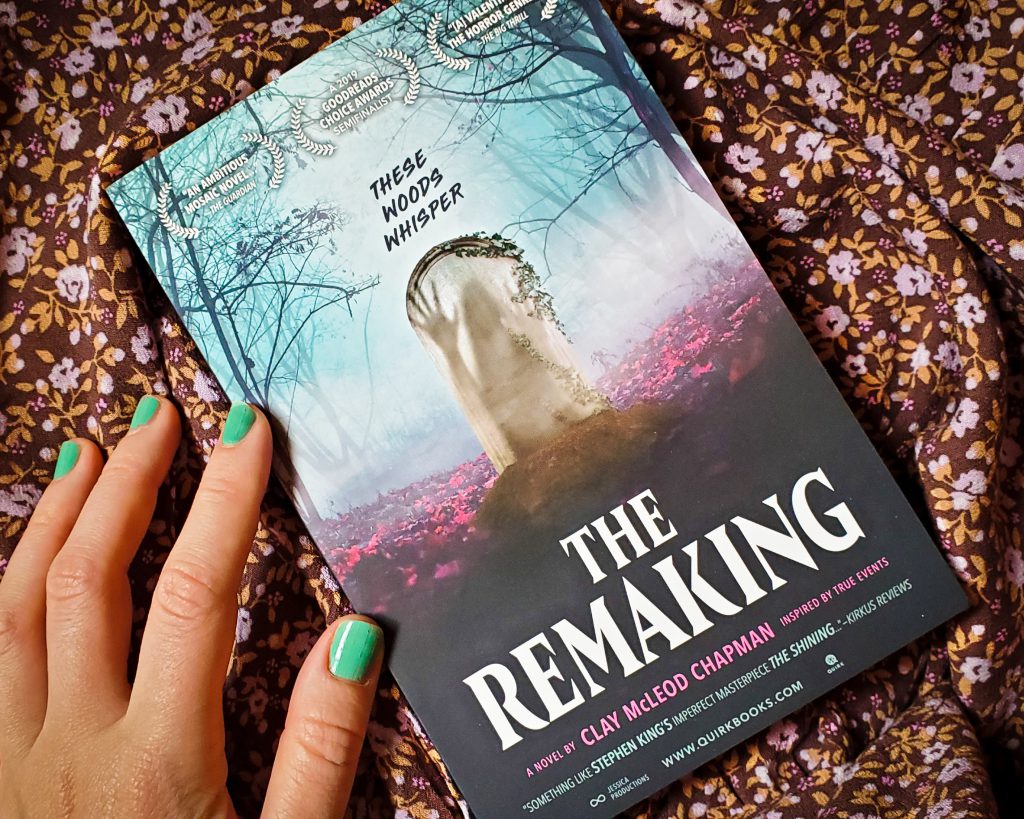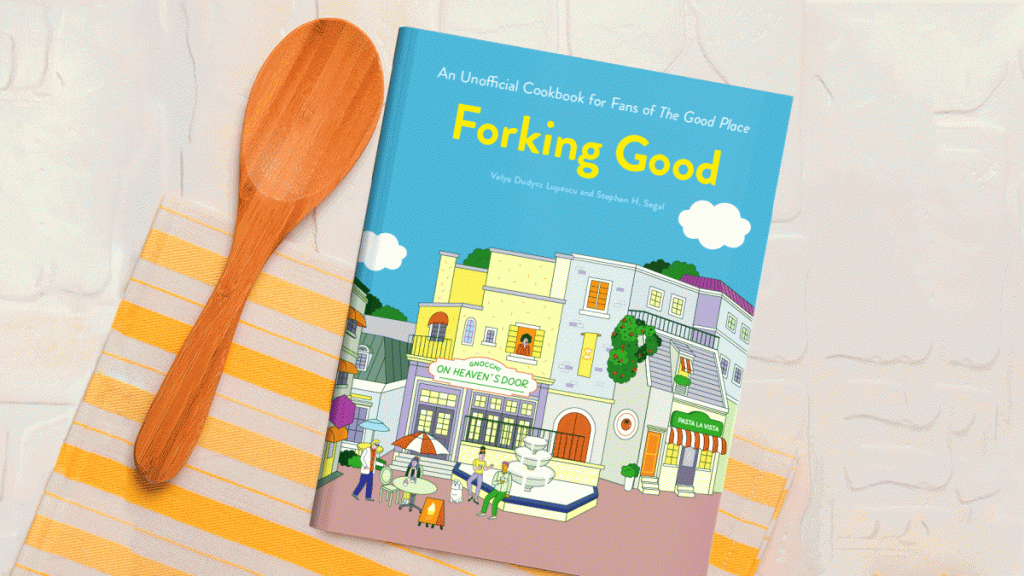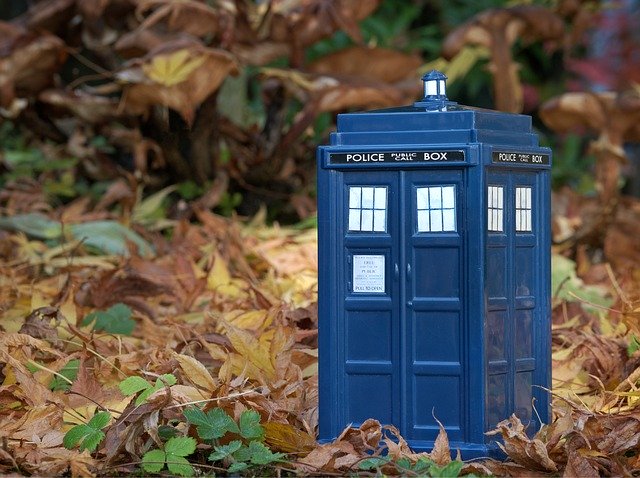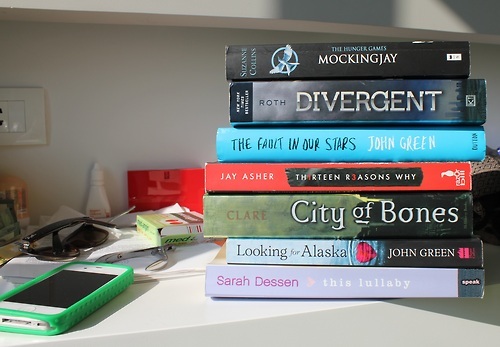The Best BOOs! Recommendations from The Remaking
An urban legend spun around the campfire…a ‘70s low-budget drive-in shlocker…its ‘90s meta-remake…then a true crime podcast from 2016 that brings it all back to its bloody roots…
These are the raw materials for The Remaking, each medium coming together to help tell the true(ish) story of accused witch Ella Louise Ford and her 9-year-old daughter, Jessica—hereunto known as The Little Witch Girl of Pilot’s Creek—as their ghost story seeps through the century.
Now the narrative nested doll goes even deeper with the release of The Remaking in paperback! Quirk offered me an opportunity to talk about my personal faves from each medium and speak to the inspiration behind the novel itself. Here goes!

SPOOKIEST URBAN LEGENDS
The Little Witch Girl of Pilot’s Knob
All good ghost stories root themselves in the truth. THE REMAKING is no different. The kernel of inspiration for this novel comes from none other than Pilot’s Knob, Kentucky. Back in 1916, Mary Louise Ford and her daughter, Mary Ellen, were accused of practicing witchcraft. They were both burned at the stake, side by side, by their overzealous neighbors. Mom was buried in an unmarked grave somewhere out in the woods, while Mary Ellen’s final resting place is truly what gives this urban legend its resonance… Her body was interred in consecrated ground, sealed up in a steel reinforced coffin, under six feet of concrete. The true cherry on top: A fence welded from interconnecting crucifixes remains wrapped around her grave to this day, in order to assure the citizens of Pilot’s Knob that Mary Ellen’s ghost won’t escape. They say—they say—if you’re to visit her grave at midnight, you can still see the Little Witch Girl, holding out her hand. But whatever you do… don’t take it! She’ll drag you down into the ground with her.
A classic. The gold standard, alongside The Hook Man, for frightening folklore. What separates Mary from the rest however, what truly puts her at the top, is the performative give-and-take between story and storyteller. It’s not just the story of Bloody Mary that’s truly terrifying, it’s the fact that kids have to engage with the story and interact with it—stand in front of the mirror, stare deep into the eyes of your own reflection, and repeat her name five times. You did it, I did it. We all whispered her name in our childhood.
SPOOKIEST 1970s HORROR FILMS
Full confession: The Remaking is just a piece of fan fiction, written in the style, the very heartbeat of 1971’s Let’s Scare Jessica to Death. This film is something of an aural earworm with its implementation of layered voiceover. The spiraling, cyclical nature of its sound design burrows into your head until you’d swear you’re hearing the very same voices our protagonist Jessica is. Is it all in her mind? Or is she truly being chased by a centuries old water vampire?
While we’re on the subject of sound design, another film from the '70s shouldn’t be overlooked, and that’s 1979’s Tourist Trap. The aural schematic that plays throughout the third act is a masterclass on audio-suspense. This movie has it all: malevolent mannequins, Carrie-esque telekinesis, House of Wax murder sprees and…Chuck Connors. A win-win. Since this movie was oddly rated PG at the time for its relative lack of bloodshed, it was able to play on Saturday afternoon television for years, which is where I fortunately first stumbled upon it.

SPOOKIEST 1990s META-HORROR
Is there any other? When speaking about the self-awareness within slasher films, we all must acknowledge Kevin Williamson and Wes Craven’s masterclass in serial killer navel-gazing. Sure there was Saturday the 14th beforehand. Of course we can mention Student Bodies. But let’s give credit where credit is ultimately due. Scream opened up the floodgates to a whole decade’s worth of hair gelled hair-raising.
…But in our heart of bloody hearts, it must be said that there was one other film that truly paved the way for The Remaking…none other than 1998’s Ringu. The expansive history of Sadako herself—the original novel by Koji Suzuki, the Japanese cinematic adaptation and its sequels (and prequels), the eventual westernized remakes and its own offshoot of sanitized sequels (and reboots), along with the distinct aesthetic imprint that it left on both Asian and American horror-filmmaking for years—is unmistakably. All hail the O.G. queen, Sadako!

SPOOKIEST PODCASTS
Though The Remaking is not an anthology series in the strictest sense, the narrative is fashioned with the same cubist sensibility as those classic anthology features from the 1970s, such as Tales from the Crypt and Asylum. No other podcast harkens back to this style of storytelling than The Magnus Archives, an UK spookshow for your ears. Upload it, pop in your earbuds, close your eyes and let this deep dive into the paranormal wash over…You’ll be looking over your shoulder from here on out.
Spooky or not, I wanted to add the first season of Serial in respect to the sheer flashpoint it created for podcasts. People who didn’t listen to podcasts listened to this podcast. We were all wrapped up in its expansive narrative and its confounding inflexiblity to fit into our preconceived desire for pat justice.
Clay McLeod Chapman
Clay McLeod Chapman is the creator of the storytelling session “The Pumpkin Pie Show” and the author of Rest Area, Nothing Untoward, and The Tribe trilogy. He is the co-author, with Nightmare Before Christmas director Henry Selick, of the middle grade novel Wendell and Wild. In the world of comics, Chapman’s work includes Lazaretto, Iron Fist: Phantom Limb, and Edge of Spiderverse. He also writes for the screen, including The Boy (SXSW 2015), Henley (Sundance 2012), and Late Bloomer (Sundance 2005). You can find him at claymcleodchapman.com.





